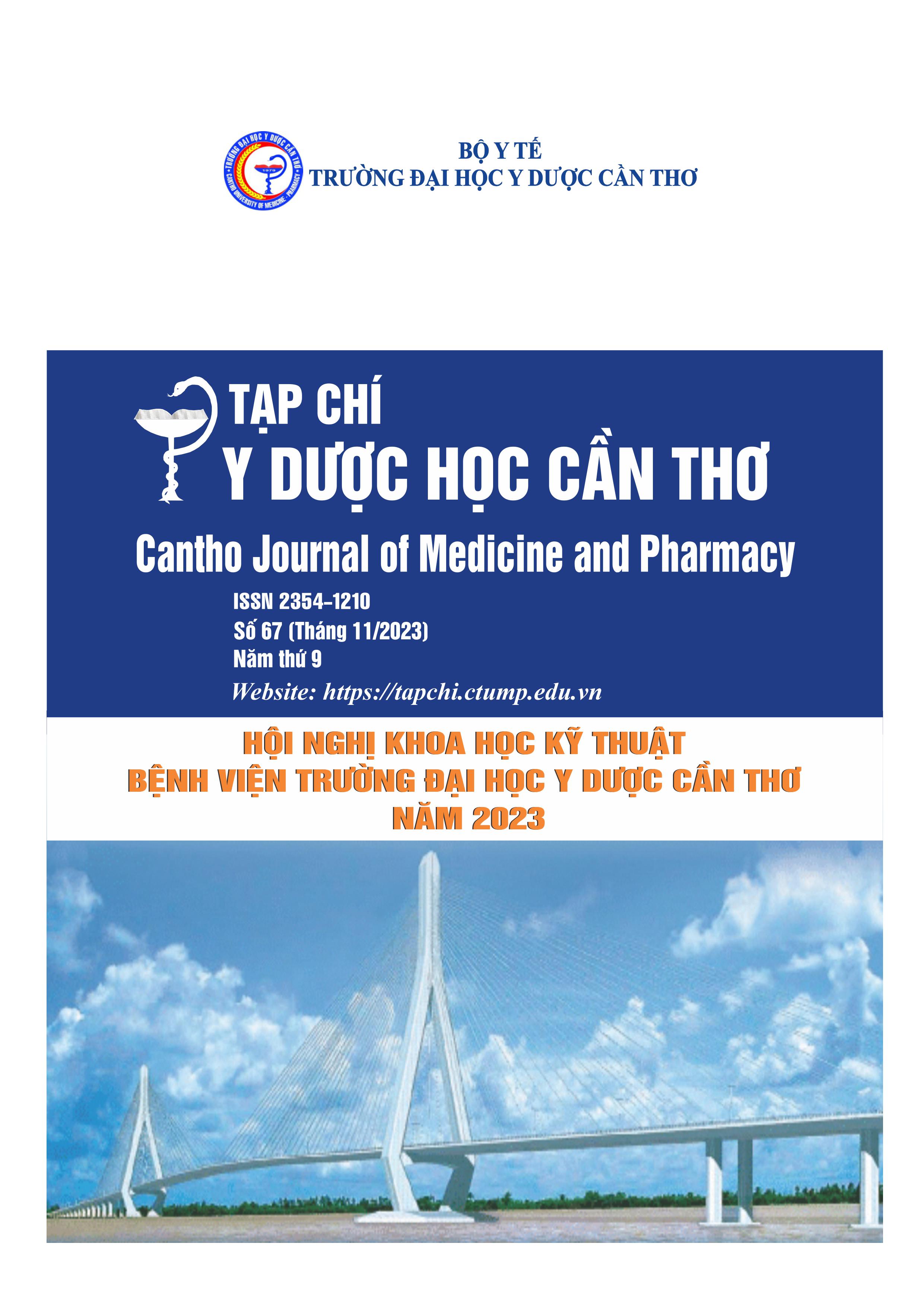OBESITY DURING PREGNANCY: CURRENT SITUATION
Main Article Content
Abstract
Obesity is a common health issue among women of reproductive age. This condition is often overlooked or ignored due to the lack of specific treatment options. Not only does obesity pose significant risks to pregnant women and postpartum mothers, but it also has long-term implications for their health, necessitating timely recognition and management. Maternal obesity can have adverse effects on fetal, neonatal, and infant outcomes, with lifelong consequences for the offspring. There are evidence-based approaches to managing maternal obesity through nutrition, behavior, and surgery. Ideally, these management strategies should be implemented before pregnancy and continued postpartum as part of long-term care to ensure the best outcomes for both mother and fetus, while preventing severe complications. This review provides an overview of conditions and factors associated with obesity during pregnancy, as well as key management considerations for pregnant or postpartum individuals who are obese. This information is relevant not only to obstetricians but also to all clinicians caring for women of reproductive age, as preventing longterm complications associated with obesity in pregnancy requires a life-course approach. Managing obesity involves implementing strategies that range from population-based public health programs to individual interventions focused on nutrition, behavior, or surgery. Therefore, understanding the management of obesity during pregnancy is crucial, and this process should commence before pregnancy and extend through the postpartum period. While obstetricians and other maternal care professionals play a central role in the care of obese pregnant women, additional support from nutritionists and other healthcare experts may be needed, depending on the specific circumstances.
Article Details
Keywords
Obesity, pregnancy, women
References
2. Centers for Disease Control and Pre- vention. CDC WONDER. About natality, 2016–2020 expanded (http://wonder.cdc .gov/natality-expanded-current.html).
3. Vats H, Saxena R, Sachdeva MP, Walia GK, Gupta V. Impact of maternal pre- pregnancy body mass index on maternal, fetal and neonatal adverse outcomes in the worldwide populations: a systematic review and meta-analysis. Obes Res Clin Pract, 2021;15:536-45, doi: 10.1016/j.orcp.2021.10.005.
4. Dachew BA, Ayano G, Betts K, Alati R. The impact of pre-pregnancy BMI on maternal depressive and anxiety symp- toms during pregnancy and the postpar- tum period: a systematic review and meta-analysis. J Affect Disord, 2021;281: 321-30, doi: 10.1016/j.jad.2020.12.010.
5. Brewer CJ, Balen AH. The adverse ef- fects of obesity on conception and im- plantation. Reproduction, 2010;140:347-64, doi: 10.1530/REP-09-0568.
6. Wise LA, Rothman KJ, Mikkelsen EM, Sørensen HT, Riis A, Hatch EE. An internet-based prospective study of body size and time-to-pregnancy. Hum Reprod, 2010; 25:253-64, doi:
10.1093/humrep/dep360.
7. Silvestris E, de Pergola G, Rosania R, Loverro G. Obesity as disruptor of the female fertility. Reprod Biol Endocrinol, 2018;16:22, doi: 10.1186/s12958-018-0336-z.
8. Rittenberg V, Seshadri S, Sunkara SK, Sobaleva S, Oteng-Ntim E, El-Toukhy T. Effect of body mass index on IVF treat- ment outcome: an updated systematic re- view and meta-analysis.
Reprod Biomed Online, 2011;23(4):421-39, doi: 10.1016/j.rbmo.2011.06.018.
9. Practice Committee of the American Society for Reproductive Medicine. Obesity and reproduction: a committee opinion. Fertil Steril, 2015;104:1116-26.
10. Metwally M, Ong KJ, Ledger WL, Li TC. Does high body mass index increase the risk of miscarriage after spontaneous and assisted conception? A meta-analysis of the evidence. Fertil Steril, 2008;90:714-26, doi: 10.1016/j.fertnstert.2015.08.018.
11. D’Souza R, Horyn I, Pavalaganthara- jah S, Zaffar N, Jacob C-E. Maternal body mass index and pregnancy outcomes: a systematic review and metaanalysis. Am J Obstet Gynecol MFM, 2019;1(4):100041, doi: 10.1016/j.ajogmf.2019.100041.
12. Alwash SM, McIntyre HD, Mamun A. The association of general obesity, central obesity and visceral body fat with the risk of gestational diabetes mellitus: evidence from a systematic review and meta-analy-sis. Obes Res Clin Pract, 2021;15:425-30.
13. ACOG practice bulletin no. 190: gestational diabetes mellitus. Obstet Gynecol, 2018;131(2):e49-e64, doi: 10.1016/j.orcp.2021.07.005.
14. Liu X, Ding G, Yang W, et al. Maternal body mass index and risk of congenital heart defects in infants: a dose-response meta-analysis. Biomed Res Int 2019;2019: 1315796, doi: 10.1155/2019/1315796.
15. Heslehurst N, Vieira R, Hayes L, et al. Maternal body mass index and post-term birth: a systematic review and meta-analy- sis. Obes Rev, 2017;18:293-308, doi: 10.1111/obr.12489.
16. Huang Y, Ouyang Y-Q, Redding SR. Maternal prepregnancy body mass index, gestational weight gain, and cessation of breastfeeding: a systematic review and meta-analysis. Breastfeed Med, 2019;14: 366-74, doi: 10.1089/bfm.2018.0138.
17. Simon A, Pratt M, Hutton B, et al. Guidelines for the management of preg- nant women with obesity: a systematic review. Obes Rev, 2020;21(3):e12972, doi: 10.1111/obr.12972.
18. Deputy NP, Sharma AJ, Kim SY, Hinkle SN. Prevalence and characteristics associated with gestational weight gain adequacy. Obstet Gynecol, 2015;125:773-81, doi: 10.1097/AOG.0000000000000739.
19. Committee opinion no. 650: physical activity and exercise during pregnancy and the postpartum period. Obstet Gynecol, 2015;126(6):e135-e142, doi: 10.1097/AOG.0000000000001214.
20. Hurst DJ, Schmuhl NB, Voils CI, Antony KM. Prenatal care experiences among pregnant women with obesity in Wisconsin, United States: a qualitative quality improvement assessment. BMC Pregnancy Childbirth, 2021;21:139, https://doi.org/10.1186/s12884-021-03629-4.


